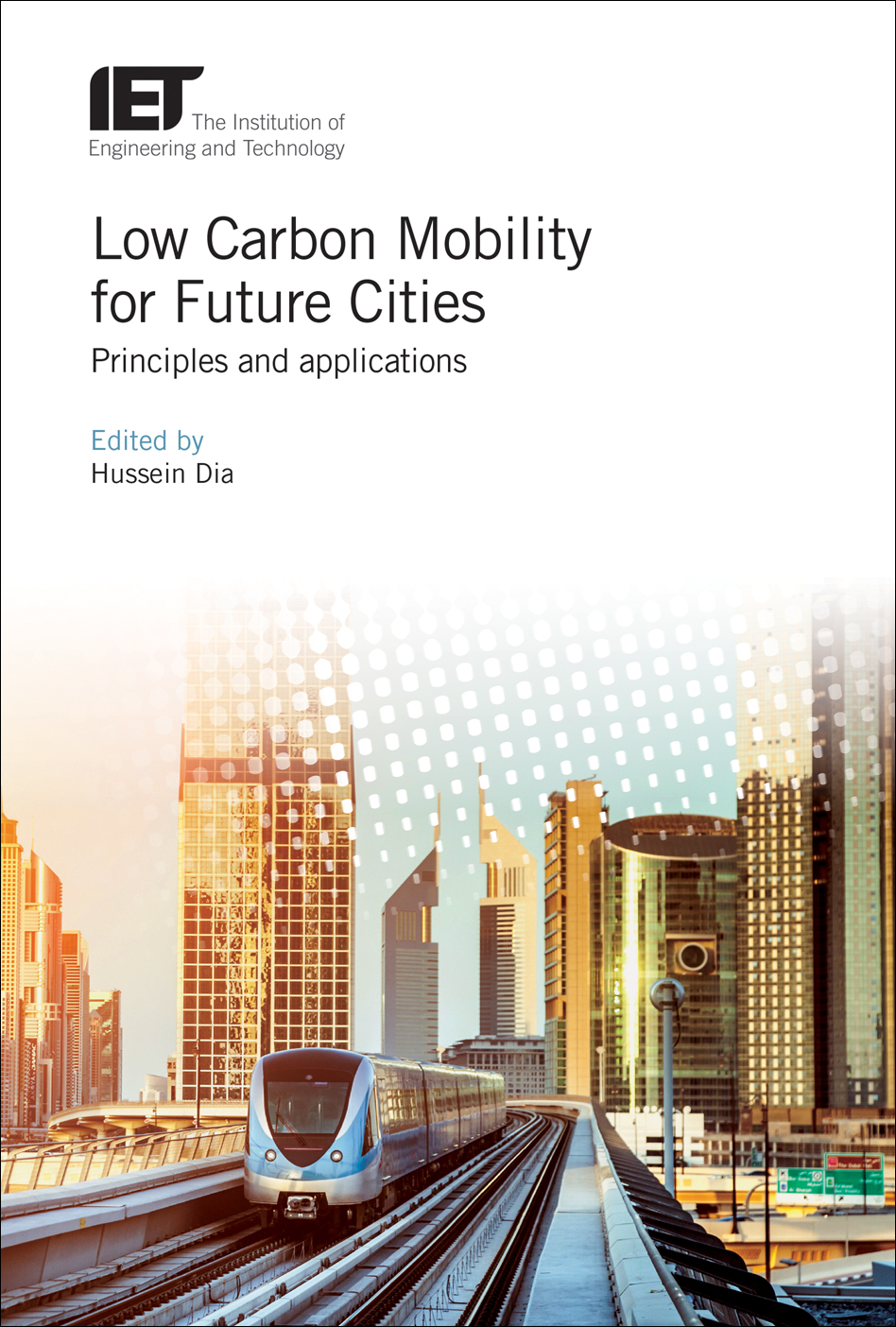- Agricultural Engineering and Technology
- Applied Physics
- Built Environment
- Computing and Networks
- Control, Robotics and Sensors
- Electrical Regulations
- Electromagnetics and Radar
- Energy Engineering
- Healthcare Technologies
- History and Management of Technology
- IET Codes and Guidance
- Manufacturing
- Materials, Circuits and Devices
- Model Forms
- Security
- Telecommunications
- Transportation

Low Carbon Mobility for Future Cities
Principles and applications
Edited by Hussein Dia
Urban Transport energy efficiency and environmental sustainability continue to present big challenges for city leaders and policy think tanks. As the share of the world's population living in cities grows to nearly 70 per cent between now and 2050, urban transport energy consumption is forecast to double to meet the travel demand in the world's future cities. This urban growth will also dramatically change the scale and nature of our communities, and put a tremendous strain on the built environment and infrastructure that delivers vital services like transport.
This book presents a cohesive body of work on the policy principles and practical applications to drive sustainable mobility services in tomorrow's smart cities. Topics covered include policy principles for low carbon mobility; low carbon mobility and reducing automobile dependence; integrated land-use and transport planning for future cities; decarbonising suburban mobility; public transport for the urban millennium; impacts on public health; active transport, health and wellbeing; mobility and the sharing economy; autonomous shared mobility; gamification and sustainable mobility; and digital innovations and disruptive mobility.
Low Carbon Mobility for Future Cities will be essential reading for researchers and practitioners in transport engineering, urban planning, transport planning and strategy, government employees in charge of sustainable practices, higher degree students, and the industries involved in offering mobility as a service.
About the Editors
Hussein Dia is Associate Professor at the Centre of Sustainable Infrastructure at Swinburne University of Technology, Australia. He is a Civil Engineer with three decades of experience in Intelligent Transport Systems and transport modelling. He has worked extensively in collaboration with both the public and private sectors, including strong engagement with industry. His research interests are in smart infrastructure systems and the convergence of technology, infrastructure and human elements in urban environments. His current work is focused on disruptive mobility and harnessing digital innovations to unlock low carbon mobility opportunities. He is a Chartered Professional Engineer, Fellow of the American Society of Civil Engineers, Fellow of Engineers Australia and Fellow of the Institute of Transportation Engineers.
Publication Year: 2017
Pages: 376
ISBN-13: 978-1-78561-197-1
Format: HBK
Editors: Hussein Dia
